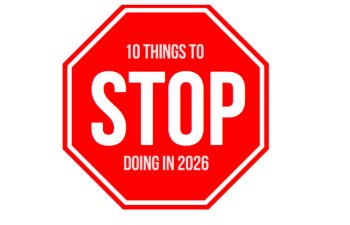Cannabis Reclassification from Schedule I to Schedule III
On Tuesday, April 30th, 2024, the DEA made a historic decision to reschedule cannabis from a Schedule I drug to a Schedule III drug under the Controlled Substances Act. Schedule I drugs are categorized as having a high potential for abuse and addiction, with no medicinal value. As a Schedule I substance, cannabis is placed in the same category as heroin—and interestingly enough, is rated as more dangerous and with less medicinal value than methamphetamine. Universities and institutions that receive federal grants are forbidden by US federal law from researching and exploring the medicinal value of cannabis.
The decision is still pending the review of the White House Office of Management and Budget (OMB) to make an official ruling. If this ruling passes through the OMB, there will be a standard period for public comment before potentially finalizing cannabis’s status as a Schedule III drug. Schedule III substances are recognized as having a low to moderate potential for physical and mental dependency.
What are the Benefits of Rescheduling Cannabis?
The rescheduling of cannabis in America has numerous positive implications for the future of the cannabis plant worldwide. Through a social lens, stigma around cannabis will continue to dissipate as the government recognizes its position on cannabis has been wrong since 1971 when Richard Nixon’s administration originally categorized the substance as a Schedule I drug.
As a Schedule III substance, cannabis can is now open for research by universities and institutions that receive federal grants and funding. This has tremendous implications for a substantial number of people with a variety of medical conditions who have long been craving clarity on cannabis dosing and the best cannabinoid and terpene profiles for their specific ailments. Currently, medical cannabis patients are self-medicating through trial and error, with very little information online for best dosing and practices. Most of the information that is currently available is purely anecdotal, forcing medical cannabis patients to do their own research, testing, and assessments, with little information from which to draw. According to US health officials, there are more than 30,000 doctors currently authorized to write medicinal cannabis recommendations for at least 15 medical conditions to over six million registered patients.
Why is Rescheduling Cannabis Far Better than Legalization?
While many cannabis industry members are celebrating this historic DEA decision to change cannabis to a Schedule III drug, many skeptics and critics are less impressed. “Why not just legalize it nationwide?” they ask. After all, cannabis is already legal recreationally or medically in 38 out of 50 states, which clearly illustrates the public’s preference for safe and reliable access to the plant and its extracts.
However, rescheduling cannabis before legalizing it is, arguably, the best possible outcome for the integrity of the cannabis plant and its many medicinal applications. If the US were to legalize cannabis today, it would likely parallel California’s disastrous legalization effort.
For all those demanding legalization right now, please ask yourself, would you rather pay $360 after tax for one ounce of cannabis flower, or have that ounce primarily covered by your health insurance?
Lessons Learned: California’s Botched Cannabis Legalization
Cannabis was first made legal for medical use in the state of California in 1996 under Proposition 215, allowing patients to obtain a medical recommendation to use and purchase cannabis for a variety of conditions. For 20 years, anyone in California could easily obtain a medical recommendation and could even grow their own cannabis and sell it to local dispensaries. At the time, legacy growers in Northern California were the backbone of the industry, producing the majority of the cannabis consumed in the US. 20 years later, in 2016, Californians decided to legalize cannabis for adult use under Proposition 64. This seemed like a positive step for the cannabis industry on paper, but it quickly proved to be the most disastrous and failed attempt at cannabis legalization of the era.
California created extremely high application fees, very high tax rates on cannabis sales (nearly 40% in some counties), and such a high barrier to entry that many of the legacy growers and operators in the Emerald Triangle, who were the pioneers of the cannabis industry, could not afford to go legal. Medical cannabis patients who had been purchasing reasonably priced and tax-free cannabis for two decades were lumped into the recreational group, forcing them to pay nearly twice the price for cannabis products and exposing them to absurd tax rates. As a result, California has been plagued with a surplus of overpriced and overtaxed legal cannabis. This corrupt system is one in which many daily cannabis consumers refuse to partake. As a result, the black market in California, which has existed for over half a century, still dominates much of California’s cannabis sales to this day.
What Implications Does California’s Legalization Effort Have on Federal Legalization?
If the US government were to legalize cannabis today for “recreational use,” it would be treated similarly to alcohol or tobacco. The federal legalization of cannabis would look quite similar to California’s rollout of cannabis—crippling federal and state tax rates for producers, high application fees, and exorbitant taxes for consumers. It would be absolutely criminal for a natural and beneficial plant like cannabis that has little-to-no known health risks to be treated the same as alcohol or tobacco—two substances that carry a plethora of known health risks and potential for addiction.
By rescheduling cannabis before legalizing it, universities and institutions will finally have the clearance to research the medicinal value of cannabis and prove which cannabinoid profiles and strains have the potential to help physical and mental ailments. Currently, the only FDA- approved drugs for cannabis are Epidiolex, which is a highly concentrated CBD oil for seizures, and Marinol, which is synthetic THC used to treat nausea and vomiting caused by chemotherapy. According to a poll from thousands of medical cannabis patients, the three main reasons people use the plant are for physical discomfort, stress, and promoting a good night’s sleep. These health issues affect tens of millions of people nationwide, and if research can prove cannabis’s potential to treat these ailments, it will have huge implications for the future of the cannabis plant.
Legalizing Cannabis Today vs. Legalizing in 5+ Years
Again, if cannabis were legalized today, it would likely look identical to the state of the cannabis industry in California—one that is marred by overtaxation and plagued by greed and corruption. However, if we dedicate 5-10 years to researching cannabis and thus are able to prove its safety, as well as its myriad practical medical applications, the future of the cannabis plant would be astronomically different. Once more medical applications are proven for cannabis, the FDA and health insurance companies will have no choice but to embrace its medicinal value. The future could very well look something like walking into your regular pharmacy and shelling out a $20 copay on an ounce of cannabis flower. So for all those demanding legalization right now, please ask yourself, would you rather pay $360 after tax for one ounce of cannabis flower, or have that ounce primarily covered by your health insurance?
Cannabis is a plant that has long been misrepresented and degraded by propaganda and misinformation—but it wasn’t always the case. In the early 1900s, you could find cannabis at your local drug store being sold legally and generally recognized as a healing substance. It wasn’t made federally illegal until the Marihuana Tax Act of 1937 and then solidified under the CSA in 1971. Now, 86 years later, it appears that cannabis is finally getting the respect and recognition it deserves from the DEA and federal government. With continued research into the plant’s many potential medical applications, the US will eventually legalize cannabis for health and wellness purposes rather than doing so today in the name of tax revenue and job creation.

Written by Brandon Schechter, founder of Yin Yang Infusions, Zen Delta 8 & Sublime Delta 9. Yin Yang Infusions was started in 2014 with the mission of making cannabis products for cancer patients and veterans in Connecticut. Brandon opened his hemp companies with the intention of making high-quality consumer products affordable and accessible nationwide. A portion of the proceeds from these products goes toward providing free products to cancer patients and people with debilitating conditions.




















